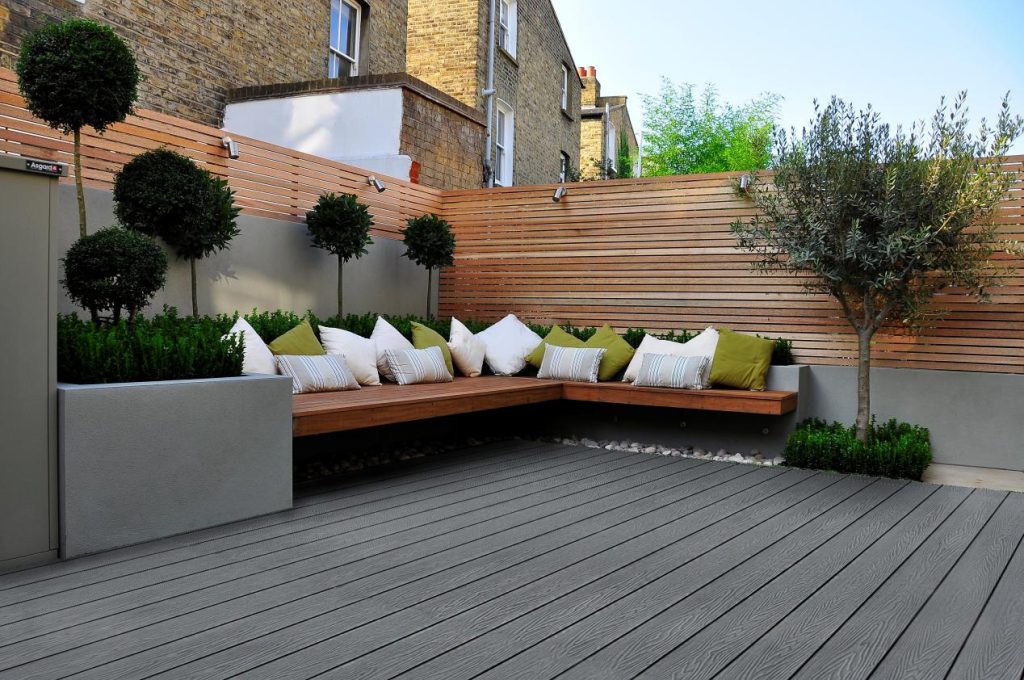- What is wood plastic composite material
Wood-plastic composite materials are a new type of composite materials that have flourished at home and abroad in recent years. They use polyethylene, polypropylene, polyvinyl chloride, etc. to replace the usual resin adhesives, and combine more than 50% of wood powder, rice husk, straw, etc. Waste plant fibers are mixed into new wood materials, and then processed through extrusion, molding, injection molding and other plastic processing techniques to produce boards or profiles.
Mainly used in building materials, furniture, logistics packaging and other industries. A board that is hot-extruded after mixing plastic and wood powder in a certain proportion is called an extruded wood-plastic composite board

- Characteristics of wood-plastic composite materials
Features:
The basis of wood-plastic composite materials is high-density polyethylene and wood fiber, which determines that it has certain characteristics of plastic and wood.
①.Good processing performance
②、Good strength performance
③. Water-resistant and corrosion-resistant, with long service life.
④. Excellent adjustable performance
⑤. It has UV light stability and good colorability.
⑥. Can be 100% recycled and reproduced
⑦. Wide sources of raw materials
⑧. Can be made into any shape and size - Where wood-plastic composite materials are used
Outdoor: outdoor boards, flower box boards, decorative boards, bench strips, signs, structural materials, hydrophilic paving, dock paving, water passages, buildings near water, profile (board) materials, profile (pole) materials.
Indoor: floor, ceiling, wall skirts, decorative moldings.
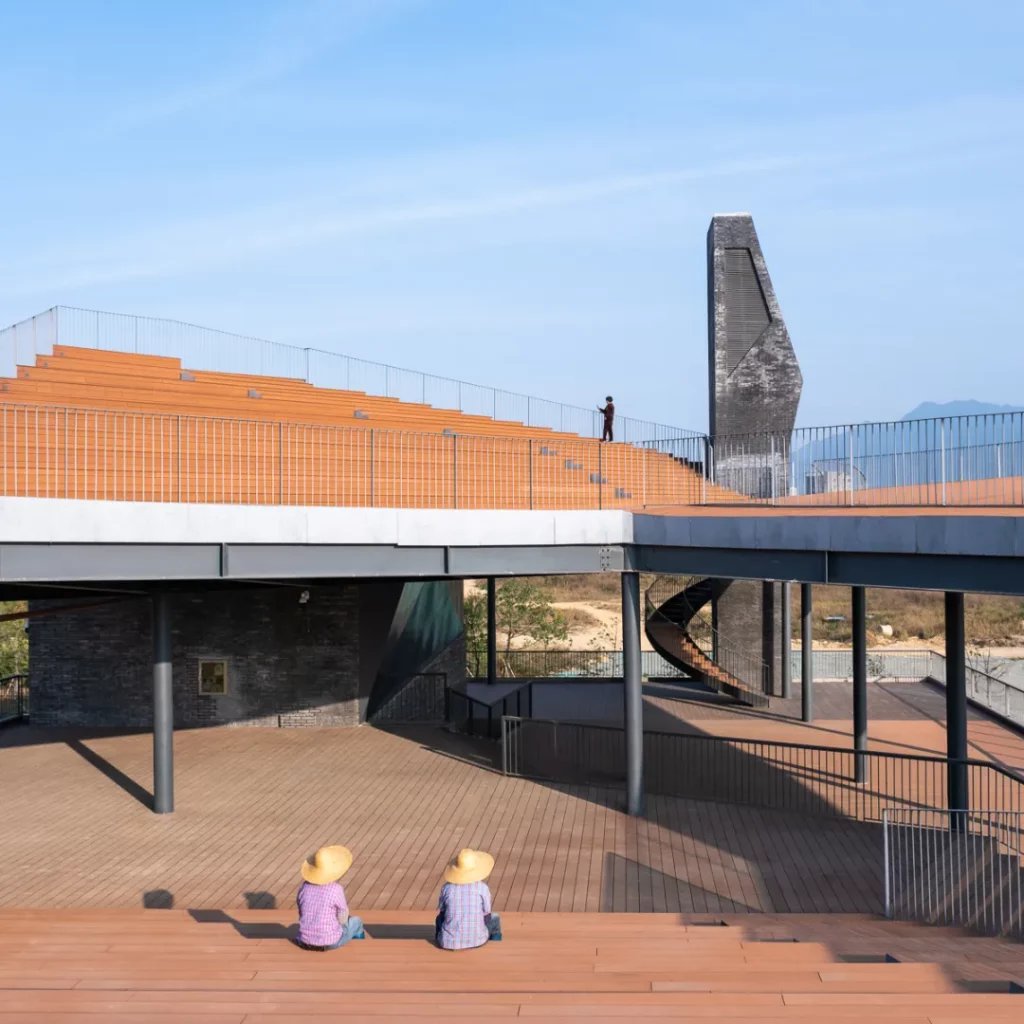
- Wood-plastic composite material technology
With the research and development of wood-plastic composite materials, in addition to high-density polyethylene or polypropylene, the plastic raw materials for producing wood-plastic composite materials include polyvinyl chloride and PS. The process has also developed from the earliest single-screw extruder to the second-generation conical twin-screw extruder, and then to the preliminary granulation by the parallel twin-screw extruder, and then the conical screw extrusion molding, which can make up for the difficulty in plasticization. , poor aging resistance, poor creep resistance, poor color consistency and durability, and poor tensile strength, etc.
Wood plastic installation process:
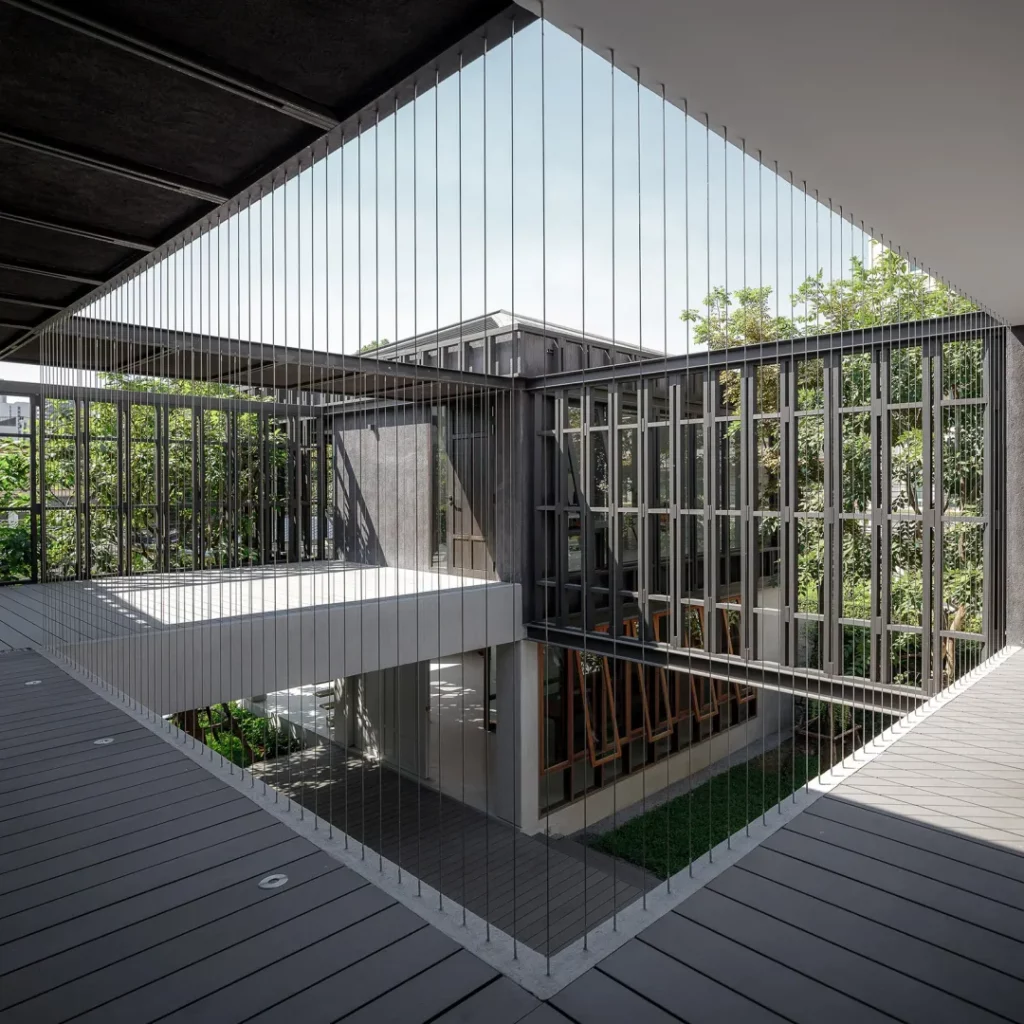
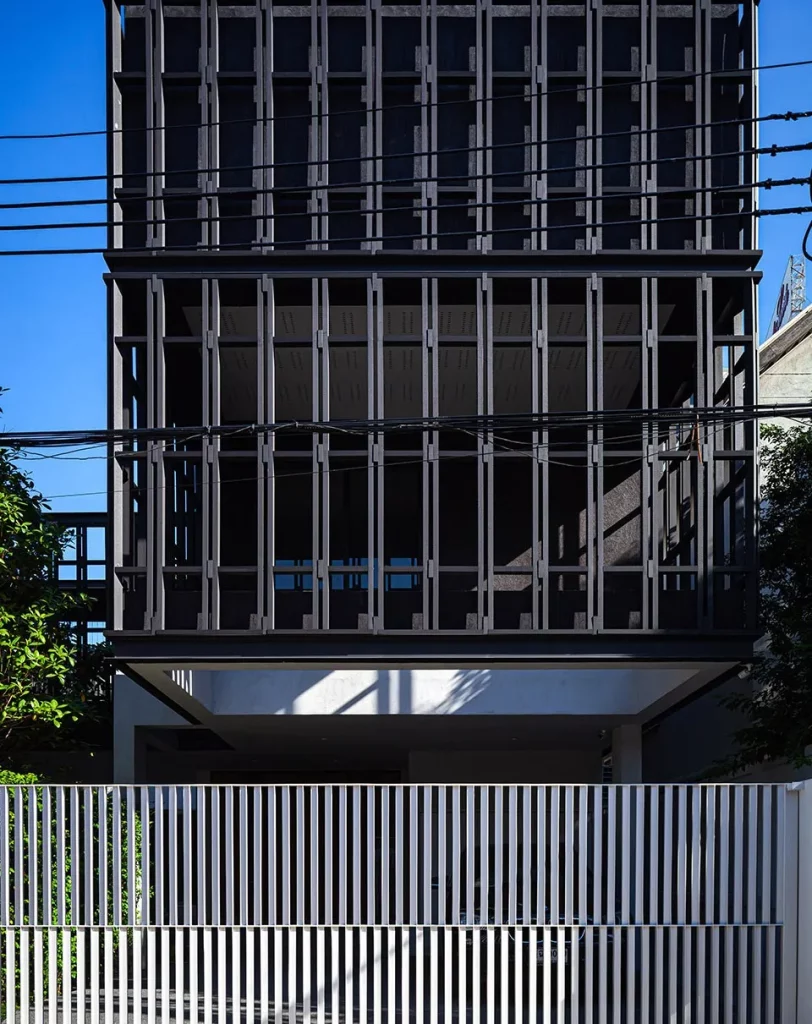
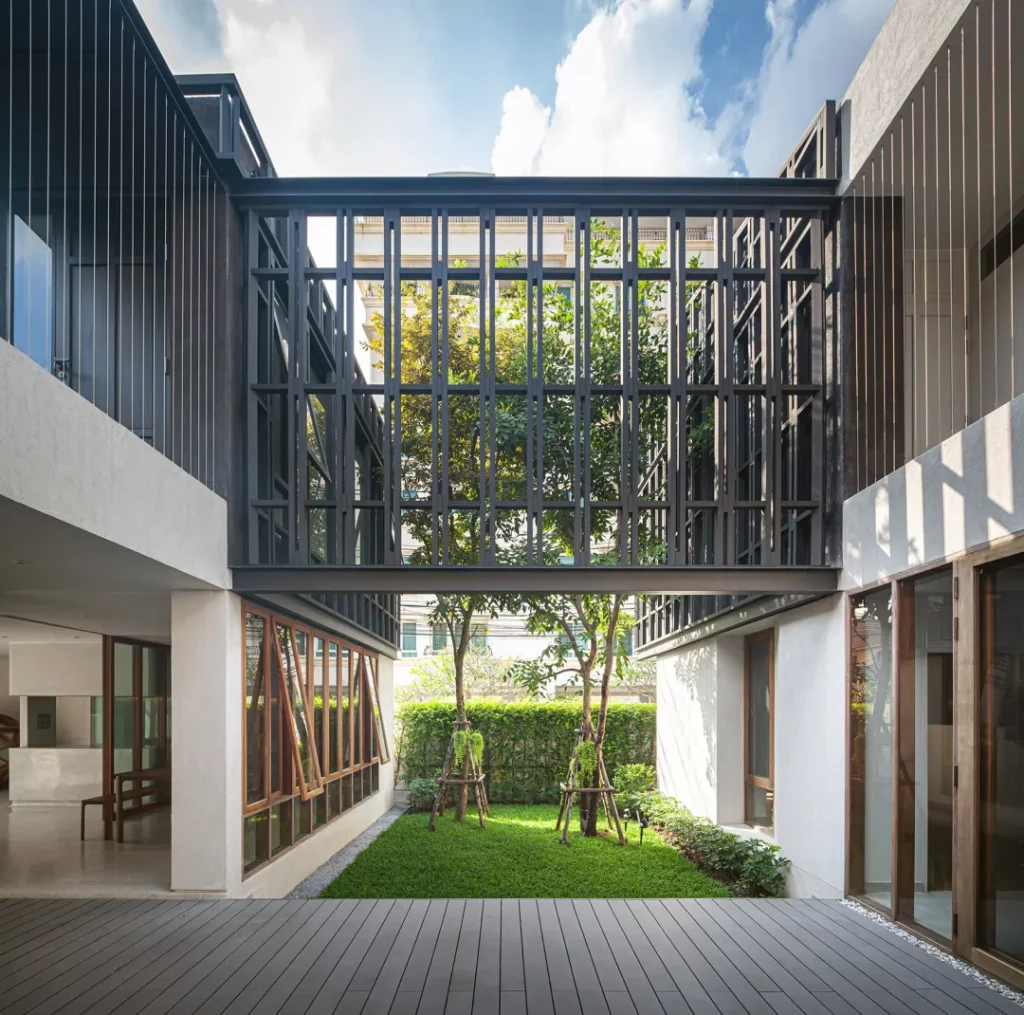
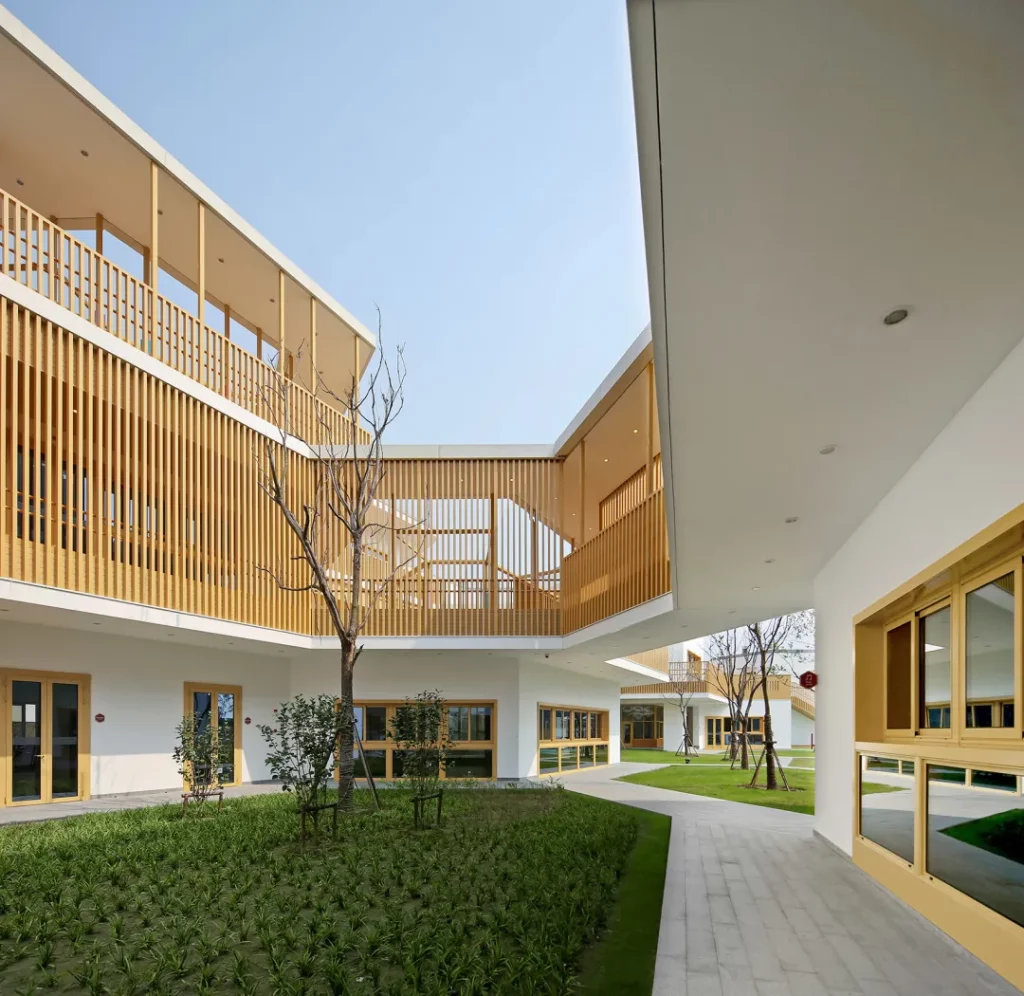
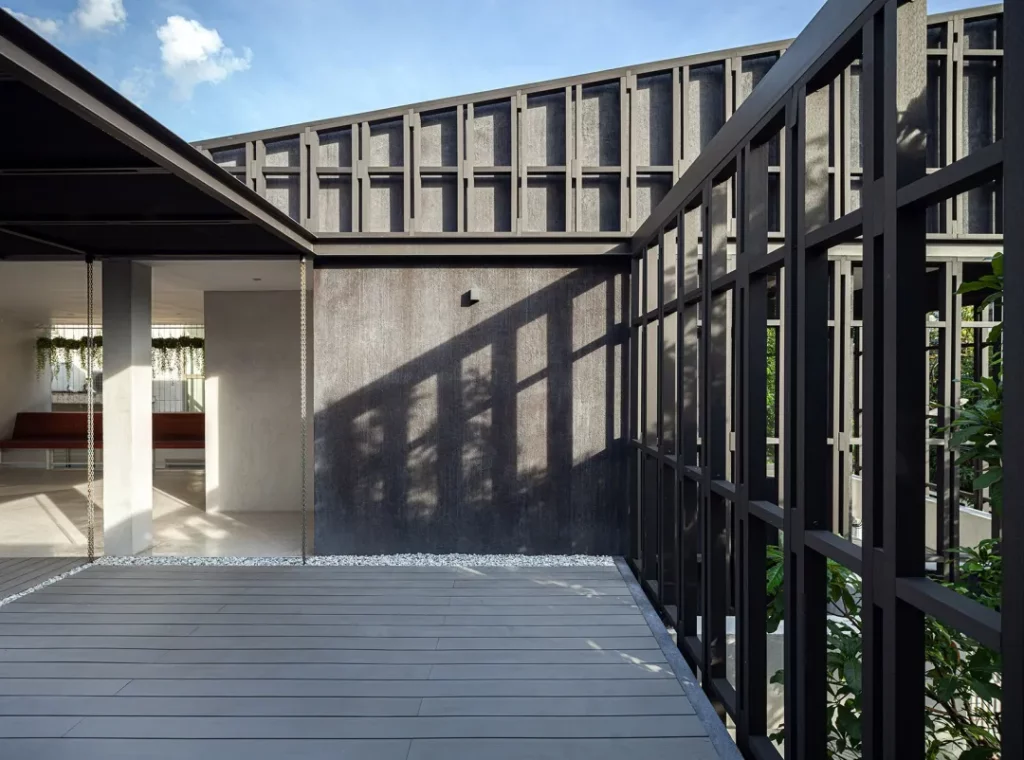
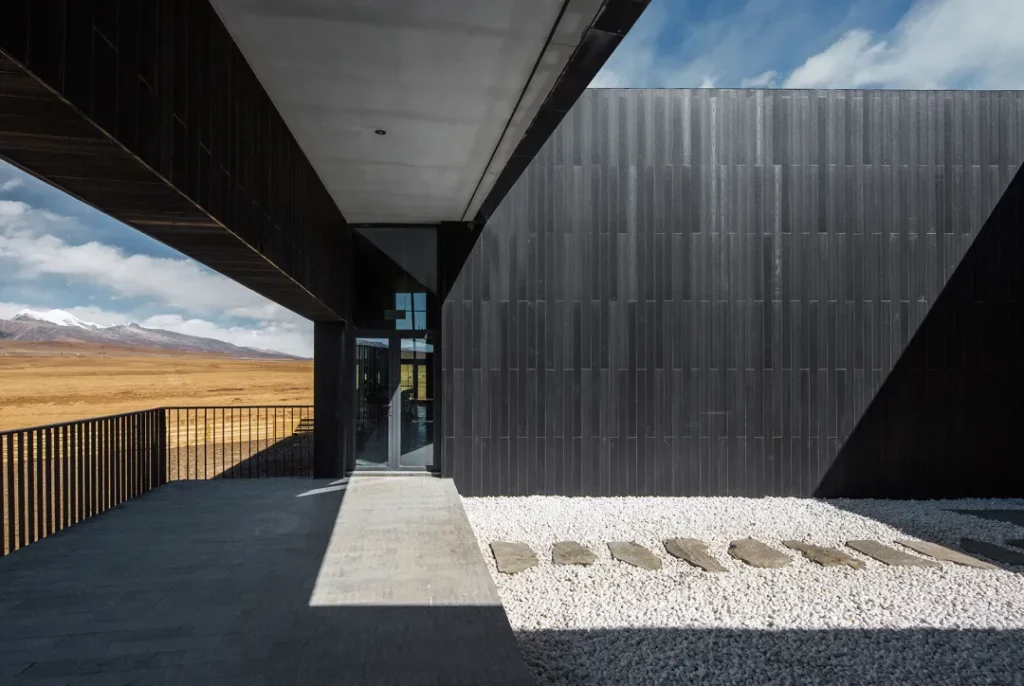
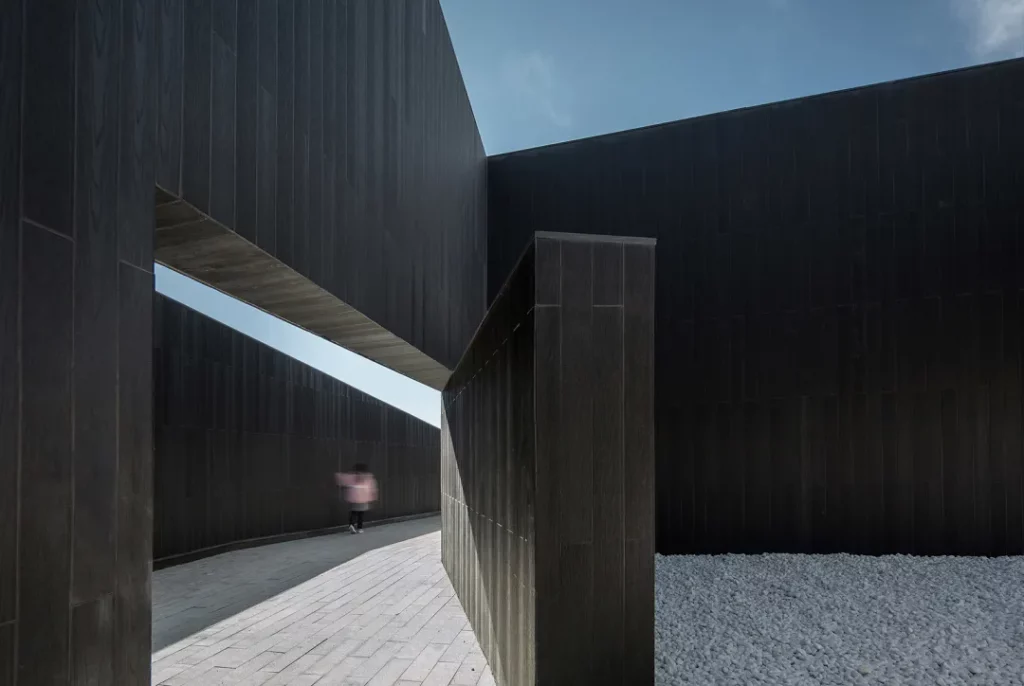
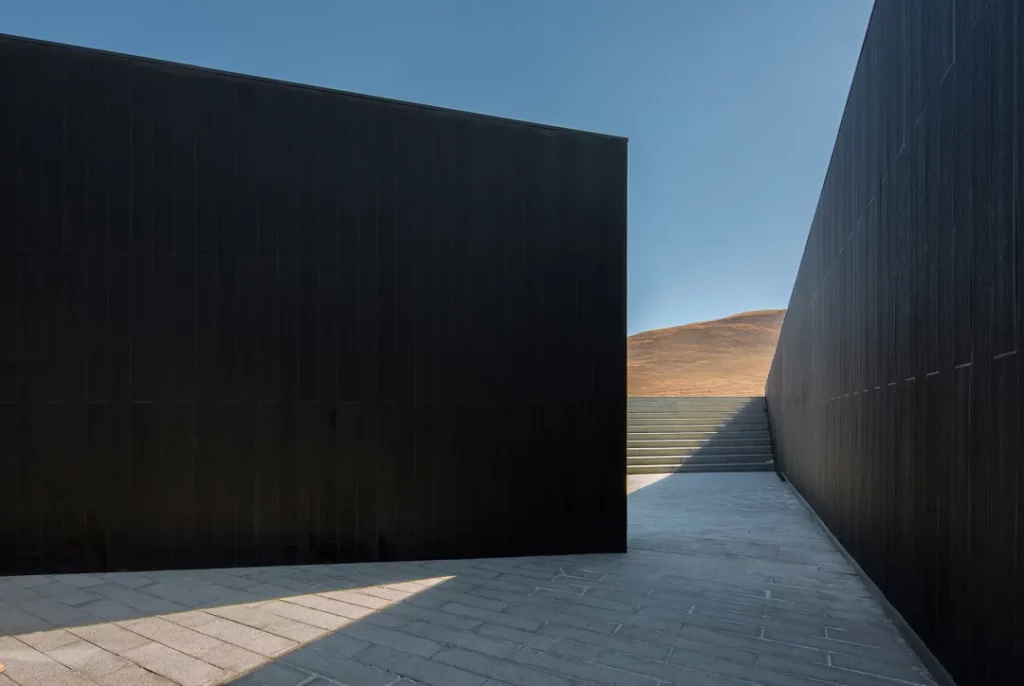
- Application cases of wood-plastic composite materials
A.
Second Generation House No. 11
Location: Bangkok / Design: Beautbureau
The black grille facade is composed of prefabricated wood-plastic composite panels. Its production refers to the wooden boards on the walls of traditional Thai houses. The pattern is abstract, the color is simple and thick, and it also shows the beauty of different eras.
B.
Pingshan balcony
Location: Shenzhen / Design: Nansha Original Architectural Design Studio
The wood-plastic structural layer uses vertical and horizontal keel frames to form an overhead layer with the structural surface of the steel structure: the main keel conforms to the drainage direction of the folded surface, and the wood-plastic surface layer covers the structural layer, leaving gaps for drainage to the overhead layer. At the same time, it is combined with safety guardrails to form Clean, simple and beautiful unified finish.
C.
When the Xiongyang Bajing Walker·Black Tent
Location: Tibet / Design: PURE Architecture
The main building material of the project uses black wood-plastic panels, creating a quiet space atmosphere.
D.
Bilingual Kindergarten Affiliated to East China Normal University in Shanghai
Location: Shanghai / Design: Shanshuixiu Architects
The wood-plastic structure connects the corridors of different spaces, giving people a warm feeling.
E.
Landscape planning and design of Muyu Lake Park in Xiangtan, Hunan
Location: Xiangtan, Hunan/ Design: Taihe Design
Thick plastic wood panels are used to make the facade decoration part of the bridge body and the facade of the step seats.


